In light of the overwhelming interest in Pinterest, plus the popularity of my recent post, “I’m Hooked! Why 10 Reasons Why Artists Love Pinterest”, I wanted to address the issue of copyright concerns.
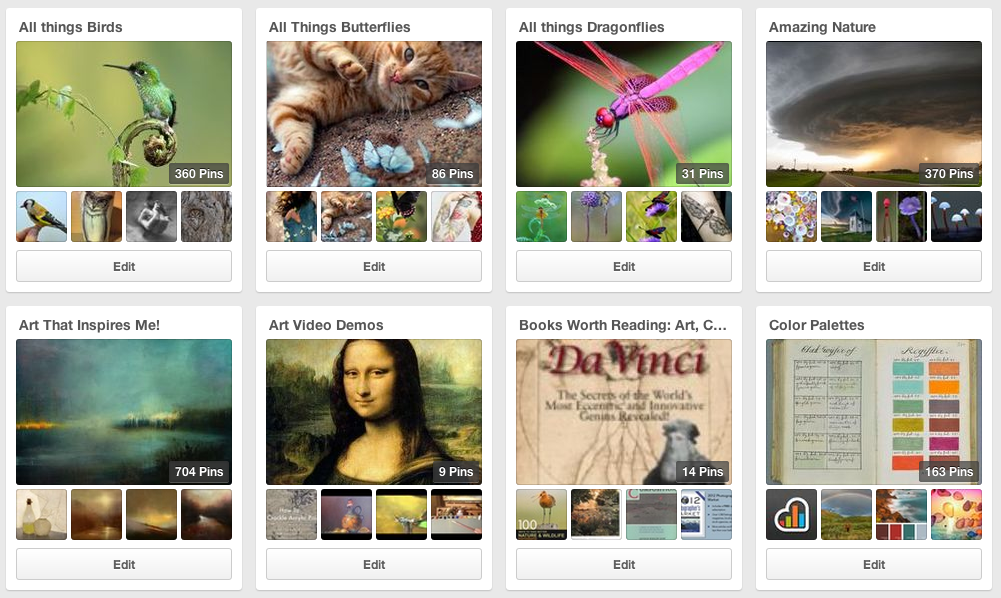
A while back I had my own artistic copyrights infringed via Facebook, How I Stopped a Copycat Artist on Facebook – you may want to see what happened to me. Nevertheless, fellow artist and Pinterest user, Wren Allen has researched and written this helpful guest post on the heated topic of Pinterest and our copyrights.
How to Use Pinterest and Still Respect Others’ Copyrights
Disclaimer: I am not a lawyer, just an artist who tries to follow the Golden Rule and respect other people’s copyrights like I would want them to respect mine. ~Wren Allen I joined Pinterest recently and am just as besotted with this new online past-time. Pinterest provides artists with the chance to share their art with others as it creates fun collages or ‘pinboards’ of all the beautiful imagery that inspires them. A big plus for me was that if used properly, Pinterest credits the images links back to the original source. It seemed like the perfect way to collect and enjoy all the gorgeous things I see online while still respecting the usage rights of other creatives. However, things aren’t that simple. Pinterest does indeed link back to the web page where the pinning member found an image, but thanks to the ease of copy, paste and post, that might not be the website belonging to the original artist, but an anonymous blog that doesn’t ask permission or give credit. After a close call with a re-pin that turned out to be unauthorized, I realized I needed to think out a personal pinning policy.
The most important things to think about when pinning an image are:
- Does the artist authorize royalty-free, non-commercial “fair use” of their image in social media, including Pinterest?
- Is the use intention “fair use”?
- Will placing this image in the Pinterest image pool damage the artist’s ability to earn a living? Remember, the artist decides this one, not you!
- Attribution or credit is not always enough! Many images are available only through paid licensing, if at all.
Using other people’s images in Pinterest hinges on whether these digital pinboards fall under the Fair Use provision of the US copyright law. Under section 107 of this law, copying and using small portions or excerpts of copyrighted material without payment to the original creator is permitted for a limited number of personal, informational and educational uses—as long as these small portions and reproductions of the original work do not damage the earnings value of the original creative work, nor damage the reputation of the original author or artist. (http://www.copyright.gov/fls/fl102.html )
The author or artist decides whether the excerpt or usage is damaging, not the end user. Since the Pinterest concept is clearly related to the bulletin boards and binders that everyone has used to collect printed imagery, the non-commercial, personal research, or educational use conditions for the individual user seem to be clearly met. The question is whether pinning an image onto Pinterest can damage the ability of the creator to earn a living by licensing that image. While some artists don’t mind non-commercial use of their images as long as they are credited, many others who license their images to publishers and manufacturers can’t afford to allow their images to be used in social media.
Where can you find images that you can safely use on Pinterest and in social media? Here is a list of the groups of artists who explicitly permit the use of their pictures on Pinterest:
- Artist who are members of Pinterest.
- Artists who have a Pinterest button displayed on their blog or website.
- Artists who use a Creative Commons license ( http://creativecommons.org/ ) to grant permission to the general public to use their work non-commercially in exchange for a credit.
- Artists with an online Etsy shop. Etsy incorporates a “Pin it” button on their site, so pinners can pin as they browse.
- Be sure you list credits in the caption, as well as the automatic Pinterest link!
- If the image has a watermark, even better, as the artist’s info remains intact through re-pins.
There are quite a few other online sources for great Pinterest photos where permission seems to be given, as these sources are distributing their images through social media in hopes of going viral with their message:
- The output of major media-like magazines and television networks. House Beautiful even retweets tweets made by fans of their magazine spreads! Nina Garcia extracts photos from the hundreds that Elle magazine licenses each month in order to build her own Pinterest page – to name just 2 obvious examples.
- The social media output of cultural and scientific institutions. Some examples are NASA’s Astronomical daily photo and the New York Botanical Garden’s blog of “Daily Eye Candy” .
- Retail web sites. Whether Amazon, Etsy or a bricks-and-clicks retail store, your pin functions like a tiny ad. Pinterest even receives affiliate reimbursement on some of these via Skimlinks. And as mentioned earlier, Etsy uses a “Pin it” button on their site to make pinning easier for fans and shoppers.
Who NOT to pin:
- Artists who have a clearly marked traditional copyright notice with “All rights reserved” on their blog or website.
- Artists who have not marked or indicated any copyright or usage permits on their blog or website. Assume they do not want their images spread through social media.
- Artists who license their images to publishers or manufacturers.
- Image licensing agencies such as Getty or Shutterstock. Pinterest may be negotiating a usage contract with one or more of these agencies, but until then, use of these images is by contract and payment only.
- Anonymous Tumblr and other blogs. There are a lot of image-centered blogs out there that display beautiful photos and illustrations that are neither licensed nor credited. Avoid using!
Safe re-pinning. There are so many beautiful photos already in the Pinterest pin pool that are hard to resist re-pinning to complete that perfect board. Before you re-pin, investigate and follow the pin back to its source:
- Is the source the original creator?
- Can you link back from the source to the original creator? Does the original artist authorize royalty-free pinning or other non-commercial use of his/her image?
- If so, try making a fresh pin from the original source.
- If not, avoid the re-pin.
This certainly isn’t the end of the discussion on what sorts of images you can or can’t use on Pinterest. My own list of do’s and don’ts is still evolving. What is your experience and what do you suggest is a good way to enjoy this new digital social outlet?
Here are some more discussions about this issue:
- Photographer Trey Ratcliff is a Pinterest member and Creative Commons enthusiast. http://www.stuckincustoms.com/2012/02/13/why-photographers-should-stop-complaining-about-copyright-and-embrace-pinterest/
- Sean Locke is a photographer who has written a series of posts about his Pinterest misgivings http://seanlockephotography.com/2012/01/26/pinterest-com-and-copyright/
- Blogger Amy Locurto writes about recipe theft using Pinterest as the medium http://www.livinglocurto.com/2012/02/letter-bloggers-pinterest/
- Clay Zeigler is a marketing consultant and photography enthusiast with a balanced report about photo usage on Pinterest http://rising.blackstar.com/pinterest-comes-with-pros-and-cons-for-photographers.html
- A lawyer/photographer gives her reasons why she deleted her Pinterest account http://ddkportraits.com/2012/02/why-i-tearfully-deleted-my-pinterest-inspiration-boards/#comment-143



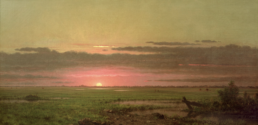
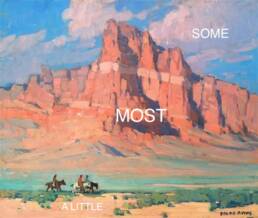
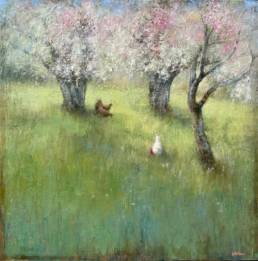
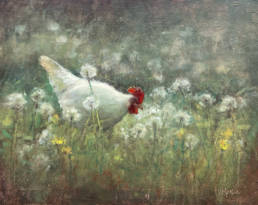
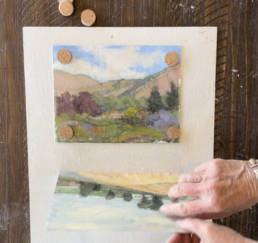
I’d still rather trust the lawyer that wrote this article below about issues with repinning on Pinterest.
Via Carolyn Edlund @ArtsyShark
Why one photographer/lawyer deleted her Pinterest boards bit.ly/xb4S8E
Allison Reece/Visual Artist
Hi Allison, thanks for posting this really helpful article. I added it to the bottom of the post so others will find it.
Good to see you,
Lori
Hi Lori
Thanks for this very thoughtful and useful article.
I have just metataged both my website & blog so they can’t be pinned, but have no idea which images hae already been pinned.
My concern is, as you mentioned above, about limiting avenues of income. I produce limited edition giclee prints from some of my artwork. I also try and sell cards and normal giclee prints and if everyone who wants the image has it, then I won’t.
I currently don’t use pinterest, despite other artist friends loving it, as I spend too much time online what with blogs, twitter, FB pages
Sue
You are very welcome Sue. Thanks for stopping by…
People can still steal your images from your site by ‘save as’ or ‘screen shot’…the metatag will help limit the problem, but wont fix it. I still like Pinterest, but I am watching it closely.
Cheers-
Lori
If you still want to post your art to show it off, but don’t want it to be stolen, I would suggest adding a large watermark sign on top of the image that you have posted online. This way customers can get a general view and feeling on your art but they only get the original (non watermarked) artwork when they purchase it. It might help a little, but I’m not saying it’s a perfect solution.
To watermark or not, that is the age-old question! I have done it, and now I don’t. I prefer to upload lower res images. But, others will argue with me on that point too! Thanks for your input…
These are really helpful guidelines but I would like to see a proper credit to the original source/artist instead of a link to the pinterest pin in the three examples given in this article.
For example, it took three clicks (first to the pin, click the image to go to a blog article, then there is a link which just says ‘website’).
This pretty much demonstrates that most people are just seduced by pretty images and many won’t bother to seek or go back to the original source (the artist’s portfolio website). If people pin images of artist’s artwork they should provide a direct link to the artist’s website (not a random blog that does pretty much the same as pinterest but with more words – collections of cool and pretty things). They should also respect ‘all rights reserved’ and do not use without permission, etc, but many pinterest users are pretty clueless about copyright – it’s just fun.
This is a great idea. I have found the three-click thing to be kind of lame too. Hopefully Pinterst will listen to all of this buzz and make the needed improvements.
Thanks for the visit-
Lori
I’ve recently started using Pinterest – after seeing a number of links into both my website and my blog from it.
Even though I license my images and sell them as fine art prints – I’m fine with people pinning my photos. Just about every photo I’ve posted in the past 3 years has my copyright info and URL on it. The files are generally no larger than 800 pixels in the long dimension. My copyright and contact info is in the metadata. Files aren’t big enough to make a decent print out of – and if someone removes my copyright info – they hear from my lawyer.
I’m still figuring out my personal policy on what I pin. If I know someone doesn’t want their work pinned – I don’t pin it. When repinning – I try to work my way back to the original link – so that the link goes back to the person who created the work or I just repin art posted by the artist. And as for pinning things I see on the web – if it’s not watermarked – I won’t pin it.
I’m closely following the discussions of copyright and pinterest. I’m going to be curious to see how things evolve.
Thank for the great article
Hello Patty, I have been considering watermarking my art for Pinterest purposes. I have never been a fan of watermarks, but I just might jump on that wagon now!
Cheers,
Lori
Thank you Lori, You gave me some additional things to think about when using Pinterest. As always, appreciate your advise.
Hello Becky, it’s always good to see you here. Thanks for the comment.
Lori
There’s a lot of information here, I need to go over this. Thanks for sharing.
Glad you found this post helpful Janet, thanks for taking time to visit and comment.
Lori
The genie was let out of the bottle many years ago. That seductive message of putting your art on-line, out in the Great Blue Yonder for the world’s consumers to find it, to see it & perhaps to buy your art…
It was the end of any chance of copyright protection. The internet users of today just see images on their screens for their personal enjoyment or use or commercial exploitation…
Those images were created by artists innocently following their dreams for their art.
The big question is to stay with Pinterest or to take down what I put on it?
Hello Phil, I agree with your thoughts and just reiterated them in my reply to Chris. However, some of the terms and conditions are uncomfortable to me, and therefore I need to delve into them a bit further…tbc!
Thanks again,
Lori
I just purchased a photograph on etsy that I first saw on pinterest. I was completely unfamiliar with the artist’s work until coming across it on a friend’s board. I think there is a greater likelihood of it leading to sales than hampering them. Is the person that is satisfied with having it on their pinterest board really a potential buyer? Or is it a way to keep you and your work front of mind for someone that is a potential buyer?
This is great information! Thanks for posting your experience here. I tend to agree with you. Anyone who can find my art via my website is able to copy/paste and use my images anyway, so Pinterest isn’t much different for me. I might start watermarking my images now though…giving this some more thought. The issue seems to be pinning other people’s work that we don’t own the copyrights to.
Good to see you here Chris,
Lori
Some news: This week Pinterest posted a code snippet on their help page for people who want to protect the images on their website from the Pinterest “pin it” javascript.
It would also be helpful if Pinterest admin would make an easy-to-use, online submission form for artists to notify the service of copyright violations. Right now, they only offer the standard, snail-mail DCMA takedown procedure seen on other image websites. An online notification could at least get the legal ball rolling while the written forms and notices were being processed and mailed. Pinterest could freeze or temporarily remove a contested image until it was resolved.
Thank for the update Wren. This post has been really helpful, thanks again for sharing with us. I agree with your thoughts. Pinterest is beginning to lose some of their accounts, so I bet they are going to make some major changes. It will be interesting to follow.
Lori 🙂
I disagree that artists who are members of Pinterest are people who allow pinning. This cannot and must not be assumed. The notice of whether or not they allow pinning comes with the statement about copyright on their blog or website. If it’s “all rights reserved” then permission cannot be assumed.
As with many sites like this I took out membership to reserve my online username “makingamark” to me while I looked into the site further and weighed up whether or not to use it. I have pinned precisely nothing.
Since taking out membership I’ve become gravely concerned about the copyright issues and Pinterest’s apparently cavalier approach to monitoring how its members behave.
It has the potential to become a good site – but not the way it operates at present. That’s because although this sort of article might be helpful there’s any number of people out there who genuinely think that any image posted on the Internet is in the public domain and therefore can be copied. Wrong!
For those who would like to try and block the activities of those who like pinning anything and everything without reading first, I’ve written a couple of blog posts about how to implement the meta tag in a Blogger template and which settings to change in Flickr if you prefer not to allow others to share your images without your permission.
Hello Katherine, thank you for your insightful reply and input.
This topic has been really interesting to follow. I hope Pinterest will listen to the legitimate concerns of its members.
Pinterst as a wonderful hub for inspiration, but I am becoming concerned about its Terms & Conditions.
Nice seeing you here again,
Lori
Hi Katherine,
My apologies both for not thinking about all the possible types of Pinterest membership, and for not writing more clearly.
I should have written, “artists who are members of Pinterest who are posting their own images on the site.”
Such artists are obviously releasing their images into the Pinterest ecosystem with the intention of allowing those images to be re-pinned.
Wren, don’t be too hard on yourself. You have written a very helpful and well researched post, especially for someone who just joined Pinterest!
Thank you for taking time to reply to the comments on your post.
Lori 🙂
Some strange assumptions here. Creative Commons non-commercial licenses DON’T make it okay to pin because by uploading it to the site you’re granting Pinterest COMMERCIAL rights to SELL the image. That because someone uses the site they’re okay your adding whatever images of theirs they choose.
Pinning images you don’t have copyright to violates the site’s T&Cs.
Jossephine, thank you for making this point so clear!
Best-
Lori
I can’t keep up with FB, twitter, blogging, family, work, etc….and now Pinteres! Oh lord! How do you make time? For now I’ll just blog, fb, and twitter when ever. However, I love all the info that you provide! I’m always looking forward to reading your enewsletter, I follow you on twitter, and love looking at your Youtube. On another note, can you do a demo on how to varnish an oil painting?
Best regards,
Jasmine Abrams
Hello Jasmine, I know how you feel! All of this social stuff can get overwhelming. Just pace yourself and use it when you can. I hope to discuss varnishing in the near future. I have recently changed my varnish and approach…
Thanks!
Lori
Hi Lori,
Thank you for this article. There’s a lot I don’t know about Pinterest and really appreciate you sharing your research with us. As an artist who also uses Pinterest I’m very concerned about my artwork work being used without my permission. I try to keep my files small and post a watermark on most of them but it still worries me. I have had sales from it though so I don’t want to stop using it. There’s so much to learn about! Thank you for helping!
Jennifer
If you use a search engine like http://flickrcc.net all the images you pin are guaranteed to be shared by their authors, and the attribution is added automatically
Hello Peter, this is a great tip! Thanks for sharing…
Best, Lori
I’ve been browsing online more than 4 hours today, yet I never found any interesting article like yours. It is pretty worth enough for me. Personally, if all site owners and bloggers made good content as you did, the internet will be much more useful than ever before.
Thanks for the nice feedback! Happy you are enjoying this site…
Thanks Lori for sharing the nice article with us and helping us to understand the copyrights issue…keep the good works going…:-)
Thank you for letting me know!
Hi, Lori,
I am so happy to have come across your blog. You have shared so much common sense and good logic that I plan to check in often to see what you (and your guests) have to say and what you are painting. You have created a wonderful network, and I am very envious!
Thank you Janet! I am complimented by your words. It’s great to have you a part of my network too 🙂
Take care,
Lori
I’m afraid I don’t understand something. As a nobody who loves to make boards on Pinterest, why post images on Pinterest if you don’t want them to be shared? The whole point is to “share” images. I mean, it feels like you’re doing it to yourself here. I could potentially get behind the idea of referencing images to their original source. However, this is almost impossible to do most of the time as images get farther and farther away from their original post the more it gets repinned. This is obviously not any malice against the original poster/artist. We are simply using the site as it was made to do. And you know what, it’s a great idea. Sharing visual inspiration on a global scale is magical. It promotes art, music, love of animals, Nature etc. Instead of suing innocent Pinterest users, I would simply not post any images you don’t want to share, either on Pinterest or on any site period. Maybe only post a few images with watermarks as teasers for people. If they want to see more they know who to call. I guess I could always make all of my boards “secret” but this would be a shame in my opinion.
Hello Kaline, I am so behind on my replies. I appreciate your comment. I agree with you about sharing on Pinterest!